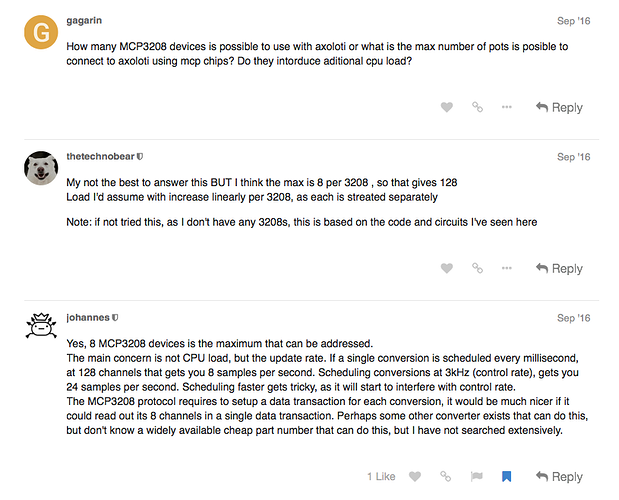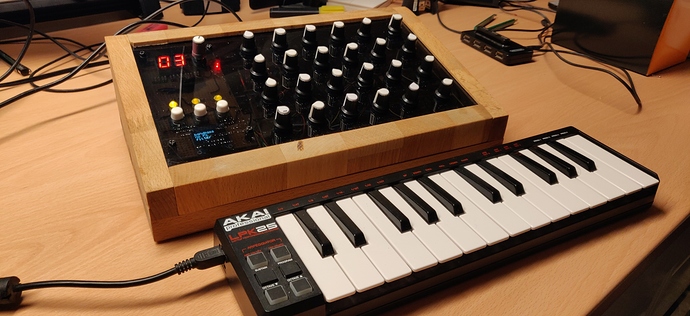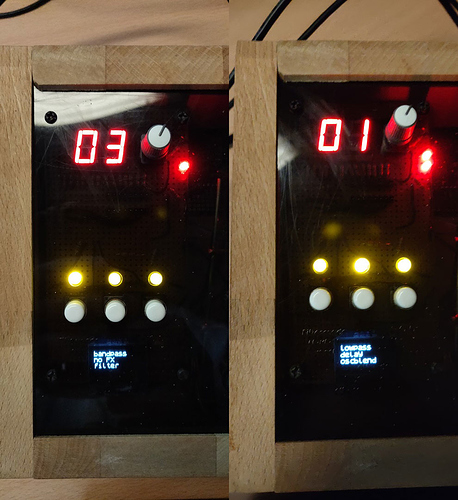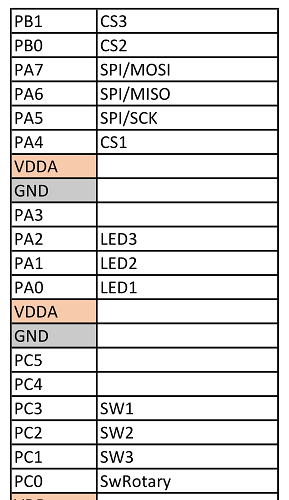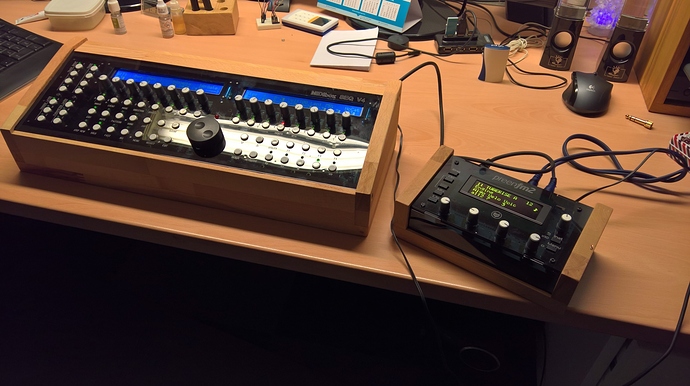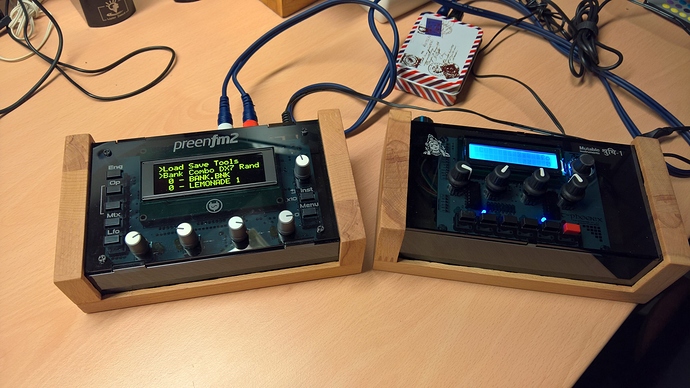Great to hear! Yes, the schematics are pretty barebones but you seem to have followed the major details.  As for a BOM, there's not that much to it!
As for a BOM, there's not that much to it!
Chips: MCP23S17, MCP3008 (x2)
3x LEDs, 3x momentary switches, 1x rotary encoder, 1x 2-digit 7 segment display
24x 10k potentiometers (or 100k), wire, and protoboard!
Honestly the case took the most time to build because I'm such a noob at construction and picked very difficult materials (plexiglass and walnut). Lately I've been getting more into building guitar pedals and started etching my own circuit boards. It might be fun to try to redesign a control board that can be put on a single-sided PCB so I can make a few to sell or allow others to build their own.
As far as the features you discuss adding, the preset stuff eluded me when last I looked into it. I know that technobear and others have been working on getting into the main software so that is a possibility. However the way my xylobox control works is to read in parameters in-real-time from the serial interface and update controls in-place, so it would have to be adjusted to respect the position of parameters set by the preset controller with some kind of takeover control (i.e. only switch to realtime control when the knob matches the preset). I also don't know how the preset storage would work, other than serializing parameters to file on the SD card.
I would probably suggest adding a couple dedicated buttons for loading and saving presets. The axo inputs are maxed-out in my design, so I'd probably add a 3rd MCP3008 and move the last 8 potentiometers to serial input as well to free up 7 more pins (8 minus the one you need one for each add'l chip). Then you could have a couple more buttons. Might also free up some object memory.
As for the realtime audio manipulation, that's easier in some ways than static wavetable management. There are a couple patchers around the forums that do the granular synthesis thing, which is basically what you're describing. However it might be a real challenge to mix this with the preset logic since you wouldn't automatically have a way of writing the audio to SD alongside the preset.
Curious to hear what you come up with! I would suggest starting small, on a breadboard, so that you can get each component working without having to debug entire systems at once. Good luck, and let me know if I can help further clarify stuff.

